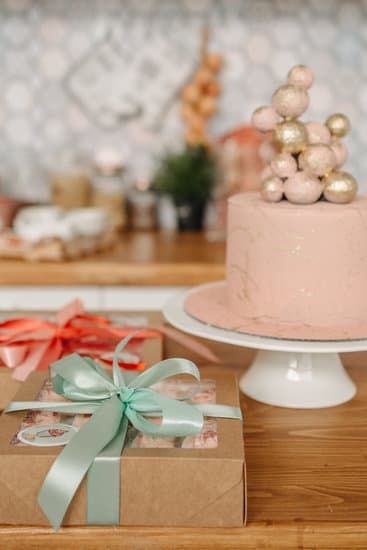Are you looking to elevate your cake decorating skills? Learn how to use silicone molds for cake decorating to create intricate designs effortlessly. Silicone molds have become increasingly popular in the world of baking and confectionery, providing a convenient and efficient way to add stunning embellishments to your cakes.
Silicone molds offer numerous benefits for cake decorators, from their flexibility and durability to their ease of use and intricate detailing. These molds come in various shapes and sizes, allowing decorators to unleash their creativity and transform plain cakes into works of art. Whether you’re a beginner or a seasoned pro, incorporating silicone molds into your cake decorating repertoire can take your creations to the next level.
With different types of silicone molds available in the market, each offering unique designs and patterns, there is no limit to the creativity that can be achieved. From floral motifs to geometric shapes, silicone molds provide endless possibilities for decorating cakes, cupcakes, and other baked goods. Understanding the various types of silicone molds will help decorators choose the right tools for their specific design needs and preferences.
Benefits of Using Silicone Molds for Cake Decorating
Silicone molds have become increasingly popular in the world of cake decorating due to their numerous benefits. One of the main advantages of using silicone molds for cake decorating is the ease of release. Unlike traditional metal or plastic molds, silicone molds are flexible, allowing for easy removal of delicate cake decorations without causing any damage. This makes them ideal for intricate designs and detailed shapes that may be challenging to remove from rigid molds.
Another benefit of using silicone molds for cake decorating is their durability. Silicone molds are not prone to cracking or breaking like their glass or ceramic counterparts, making them a long-lasting investment for any baker or cake decorator. Additionally, silicone molds are versatile and can be used for various purposes beyond cake decorating, such as making chocolates, candies, or even ice cubes.
| Advantages | Details |
|---|---|
| Easy Release | Silicone molds are flexible and allow for easy removal of delicate decorations. |
| Durability | Silicone molds are long-lasting and resistant to cracking or breaking. |
| Heat Resistance | Silicone molds can withstand high temperatures in the oven. |
Overall, using silicone molds for cake decorating can elevate your creations by providing versatility, durability, and ease of use. Whether you are a beginner or an experienced baker, incorporating silicone molds into your cake decorating toolkit can open up a world of possibilities in creating stunning desserts that will impress your friends and family.
Different Types of Silicone Molds for Cake Decorating
Silicone molds are versatile tools that can elevate your cake decorating skills to the next level. There are several different types of silicone molds available in the market, each serving a unique purpose in creating beautifully designed cakes. One common type is the 3D silicone mold, which allows you to add intricate details and textures to your cake decorations. These molds come in various shapes and designs, such as flowers, animals, or geometric patterns, giving you endless options for creativity.
Another popular type of silicone mold for cake decorating is the border mold. Border molds are perfect for adding decorative edges to your cakes, whether you want a scalloped design, lace pattern, or simple wave texture. These molds are easy to use and can significantly enhance the overall appearance of your cakes with minimal effort. Additionally, there are also silicone molds specifically designed for creating letters and numbers, making it easier to personalize your cakes with names, messages, or ages.
When choosing silicone molds for cake decorating, consider the size and shape of your cakes to ensure a perfect fit. Miniature silicone molds are ideal for creating small embellishments and accents, while larger molds work well for covering entire cake tiers with intricate designs. Experimenting with different types of silicone molds can help you discover new techniques and styles to enhance your cake decorating skills.
| Types of Silicone Molds | Description |
|---|---|
| 3D Silicone Mold | Allows for intricate details and textures in various shapes and designs. |
| Border Mold | Perfect for adding decorative edges like scalloped designs or lace patterns. |
| Letter/Number Mold | Ideal for personalizing cakes with names, messages, or ages. |
Preparation Steps Before Using Silicone Molds for Cake Decorating
Choosing the Right Silicone Molds
When it comes to cake decorating, selecting the appropriate silicone mold is crucial for achieving the desired results. Consider the design and size of the mold based on your cake decorating project. Whether you need floral shapes, geometric patterns, or intricate details, there is a wide variety of silicone molds available to suit your needs. Make sure to also check the temperature resistance of the molds to ensure they can withstand high heat when baking.
Preparing Your Silicone Molds
Before using silicone molds for cake decorating, it is important to properly prepare them to ensure smooth and successful demolding. Start by washing the molds thoroughly with warm soapy water and allowing them to dry completely. To prevent any sticking issues, lightly grease or spray non-stick cooking spray inside the molds before adding your cake batter. Additionally, you can dust a thin layer of flour or cocoa powder for extra insurance against sticking.
Adjusting Baking Time and Temperature
When using silicone molds for cake decorating, keep in mind that they conduct heat differently compared to traditional metal pans. It is recommended to reduce the baking temperature by about 25°F and closely monitor your cakes during baking to prevent overcooking.
Due to their flexibility, silicone molds may require a slightly longer baking time than metal pans, so it is essential to test for doneness with a toothpick or cake tester before removing from the oven. By adjusting these factors accordingly, you can achieve perfectly shaped and baked cakes with your silicone molds.
Step-by-Step Guide on Using Silicone Molds for Cake Decorating
Silicone molds are versatile tools that can help take your cake decorating skills to the next level. Here is a step-by-step guide on how to use silicone molds for cake decorating:
Step 1: Choosing the Right Silicone Mold
The first step in using silicone molds for cake decorating is selecting the right mold for your design. There are various shapes, sizes, and designs available in the market, so choose one that fits the theme of your cake. Whether you want floral patterns, geometric shapes, or intricate designs, there’s a silicone mold out there for you.
Step 2: Preparing Your Silicone Mold
Before using your silicone mold, make sure to wash it thoroughly with warm soapy water and let it dry completely. This will ensure that your cakes come out clean without any residue from previous use. Additionally, lightly dusting the mold with cornstarch or powdered sugar can help prevent sticking and make it easier to release the finished design.
Step 3: Filling and Using the Silicone Mold
Once your silicone mold is prepared, fill it with your chosen cake decorating medium, such as fondant or chocolate. Press the mixture firmly into the mold to ensure that all details are captured. For best results, freeze or refrigerate the filled mold for a few minutes before unmolding to help maintain its shape. Gently flexing and tapping the mold on a flat surface can help release the design easily.
By following these steps on how to use silicone molds for cake decorating, you’ll be able to create stunning and intricate designs on your cakes effortlessly. Experiment with different molds and techniques to unleash your creativity and enhance your cake decorating skills.
Tips and Tricks for Successful Cake Decorating With Silicone Molds
Silicone molds are versatile tools that can elevate your cake decorating skills to new heights. Here are some essential tips and tricks on how to use silicone molds for cake decorating effectively.
First and foremost, it is crucial to properly prepare your silicone molds before use. Make sure to wash them thoroughly with warm soapy water and dry them completely to avoid any residue affecting the appearance of your cakes. Additionally, lightly dusting the molds with cornstarch or powdered sugar can help release the finished decorations easily.
When filling the silicone molds with fondant or gum paste, ensure that you press the mixture firmly into all the nooks and crannies of the mold. This will help create sharp, defined shapes for your cake decorations. If excess material spills over the edges of the mold, use a sharp knife or spatula to trim off the excess for a clean finish.
One helpful tip for using silicone molds for cake decorating is to freeze or chill your filled molds before attempting to remove the decorations. This will make it easier to pop out intricate shapes without damaging them. Additionally, experimenting with different colors and finishes on your decorations can add depth and interest to your cakes. With these tips in mind, you’ll be able to create stunning cake designs using silicone molds efficiently.
Common Mistakes to Avoid When Using Silicone Molds for Cake Decorating
When using silicone molds for cake decorating, there are common mistakes that beginners might make that can affect the outcome of their creations. To ensure successful and beautiful cake decorations, it’s important to be aware of these potential pitfalls and how to avoid them. Here are some common mistakes to steer clear of when using silicone molds for cake decorating:
- Not properly greasing the silicone molds: One of the most common mistakes when using silicone molds for cake decorating is forgetting to adequately grease the mold before adding the cake batter or fondant. This can result in sticking and difficulty in releasing your creation from the mold.
- Overfilling the molds: Another mistake to avoid is overfilling the silicone molds with cake batter or fondant. This can cause your decorations to lose their shape or details once removed from the mold. It’s essential to follow the recommended guidelines for filling levels provided by the manufacturer.
- Rushing the drying process: Patience is key when using silicone molds for cake decorating. Rushing the drying process by unmolding your creation too soon can lead to distortion or breakage of delicate details. Make sure to allow enough time for your decorations to fully set and cure before unmolding.
To prevent these common mistakes when using silicone molds for cake decorating, it’s essential to follow proper techniques and guidelines. By taking the time to prepare your molds correctly, fill them appropriately, and allow adequate drying time, you can create stunning decorations for your cakes with ease.
Remember, practice makes perfect when it comes to using silicone molds for cake decorating. With experience and attention to detail, you’ll be able to master this versatile tool and enhance your cake decorating skills effectively.
Cleaning and Care Tips for Silicone Molds for Cake Decorating
Silicone molds are a versatile tool for enhancing your cake decorating skills, allowing you to create intricate designs and shapes with ease. Once you have finished using your silicone molds for cake decorating, it is important to properly clean and store them to ensure their longevity and effectiveness. Here are some cleaning and care tips to help you maintain your silicone molds in top condition:
- Hand Wash Only: Avoid putting your silicone molds in the dishwasher as the harsh detergent and high heat can damage them. Instead, gently hand wash your molds in warm, soapy water using a soft sponge or cloth.
- Dry Thoroughly: After washing your silicone molds, make sure to dry them thoroughly before storing them away. Use a clean towel to pat them dry or let them air dry completely.
- Store Properly: To prevent dust and debris from collecting on your silicone molds, store them in a clean, dry place away from direct sunlight. You can stack the molds neatly or store them flat to avoid deformation.
Proper cleaning and care of your silicone molds will not only extend their lifespan but also ensure that they remain food-safe for future use in cake decorating projects. By following these simple tips, you can continue creating stunning cakes with beautifully detailed designs using your favorite silicone molds.
Remember that maintaining the cleanliness of your silicone molds is crucial for achieving professional-looking results when decorating cakes. With proper care and storage, you can enjoy using your silicone molds for many more creative baking endeavors in the future.
Incorporating these cleaning and care tips into your routine will help you make the most out of your investment in quality silicone molds for cake decorating. So follow these guidelines diligently to keep your molds pristine and ready for whenever inspiration strikes – ensuring that every decorated cake turns out just as perfect as you imagined.
Conclusion
In conclusion, using silicone molds for cake decorating can truly enhance your skills and take your creations to the next level. By following the preparation steps, step-by-step guide, tips, and tricks provided in this article, you can create beautifully detailed designs with ease. The convenience and versatility of silicone molds allow for intricate decorations that would be difficult to achieve by hand.
Furthermore, the benefits of using silicone molds, such as their flexibility, durability, and easy release properties, make them a must-have tool for any baker looking to elevate their cake decorating game. Whether you are a beginner or a seasoned pro, incorporating silicone molds into your repertoire opens up a world of creative possibilities.
Overall, mastering how to use silicone molds for cake decorating will not only save you time and effort but also result in professional-looking cakes that will impress your family, friends, or clients. So why not give it a try and see the amazing designs you can create with these innovative tools? Happy decorating.
Frequently Asked Questions
How Do You Use Silicone Cake Molds?
Silicone cake molds are versatile tools in the kitchen. To use them, you simply prepare your cake batter as usual and pour it into the mold.
Make sure to place the mold on a baking sheet for stability and easy removal from the oven. Once baked and cooled, gently push on the bottom of the mold to release the cake without damaging its shape.
How Do You Stop Cake Sticking in a Silicone Mould?
Preventing cakes from sticking to silicone molds is crucial for a successful baking experience. To avoid this issue, ensure that you properly grease or spray the silicone mold with a non-stick baking spray or brush with oil before pouring in the batter.
Additionally, allowing the cake to cool completely before removing it from the mold can also help prevent sticking.
Do I Need to Line Silicone Cake Moulds?
While silicone cake molds are naturally non-stick, lining them with parchment paper or dusting with flour is not always necessary but can be beneficial depending on the recipe and personal preference. Lining the mold can provide extra insurance against sticking, especially for intricate designs or delicate batters.
However, it’s essential to adjust your baking time and temperature accordingly if using liners to prevent overcooking or undercooking your cake.

Welcome to our cake decorating blog! My name is Destiny Flores, and I am the proud owner of a cake decorating business named Cake Karma. Our mission is to provide delicious, beautiful cakes for all occasions. We specialize in creating custom cakes that are tailored specifically to each customer’s individual needs and tastes.





